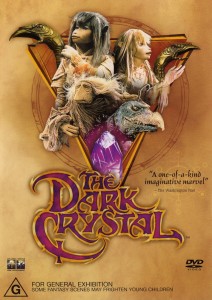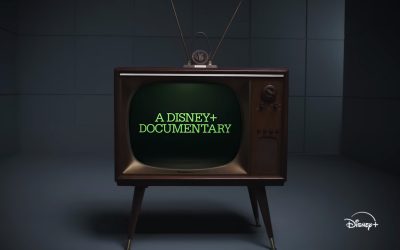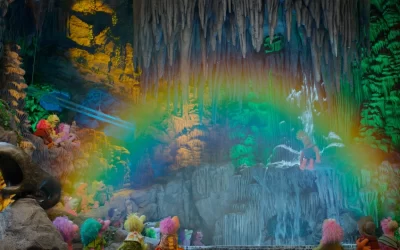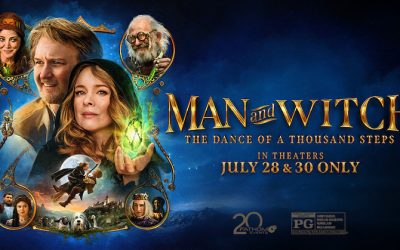Preface: This piece was originally written on October 14th, 2014, and lay in ToughPigs article limbo for almost five whole years. With the new Dark Crystal Netflix show on the horizon, at long last, its time has come to see the light of day.
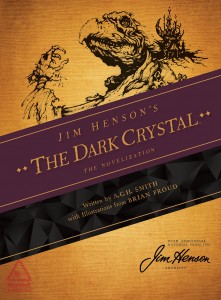 The Dark Crystal and I have a tough history.
The Dark Crystal and I have a tough history.
Much like my childhood experience with Labyrinth, The Dark Crystal scared me so much as a small child that I could not sit through the entire thing. I mean, what six year old isn’t freaked out by the Skeksis? Or the Fireys? Or the Garthim? Or David Bowie’s way-too-tight pants? Definitely this one.
As I grew older and fell in love with all things Henson, I decided to give The Dark Crystal another go. I was pleased to find the film no longer scared me – huzzah! However, unlike my childhood viewing experience, it now sort of, well, bored me. Sure, the film is visually stunning, but the dialogue is stiff and Jen makes for one hell of a dull central character. Nowadays, it’s a film I do come back to from time-to-time, though it certainly isn’t a regular watch on my end.
My biggest qualm with The Dark Crystal has always been the utter lack of backstory. Sure, there’s a lot of exposition about the Crystal and how the Skeksis terrorized the land, but that’s about the extent of it. In the past, I’ve found myself wanting to know more about this world Jim Henson invented. What all occurred around the breaking of the Crystal? What’s up with those Mystics and why don’t we get to learn more about them? Are there any other races that inhabit this realm? How did the prophecy come about? Just what the heck is Fizgig anyway? These are the questions, folks, and I wanted answers.
A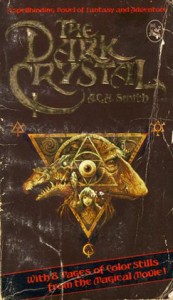 s luck would have it, my fellow ToughPig, Carolyn, gifted me with a stack of books when we went to a screening of Crystal in Portland, one of which was the novelization of The Dark Crystal. It’s not a lengthy book; there are only one hundred & eighty-six pages making up nine chapters. I figured I should see what the novelization was like, so I dug in.
s luck would have it, my fellow ToughPig, Carolyn, gifted me with a stack of books when we went to a screening of Crystal in Portland, one of which was the novelization of The Dark Crystal. It’s not a lengthy book; there are only one hundred & eighty-six pages making up nine chapters. I figured I should see what the novelization was like, so I dug in.
Right off the bat, I feel I should say this: if you’ve got questions about the world in which The Dark Crystal takes place, the book is not going to be of any help in aiding your queries. Like, not at all. Do not read this book for answers. Don’t do it. Just stop. Now.
That in no way should deter you from reading the book, even though it might sound like it. To say the least, it’s an entertaining read. Information we acquired from the film is expanded upon, and we receive better descriptions of where characters live and their ways of life. However, in expanding upon the facts we already knew, it would appear A.C.H. Smith, the author of The Dark Crystal novelization, was most likely just given a copy of the script, probably got to meet with Jim Henson and maybe got to visit the film’s set, but that was basically it. He was not given exterior information, so all the content in the book can be found in the film as well, unfortunately.
In delving into a review of the novelization, let’s focus on the positives first, as there are plenty.
What the novelization really does best is setting up the world of The Dark Crystal. The book prides itself in describing landscapes and homes of characters, and also casually mentioning the creatures who inhabit this realm. While I wouldn’t have minded a broader picture of the land in which the story is set, it’s still a nice picture nonetheless. Smith’s especially great at describing the Skeksis castle; illuminating all the creepy elements of their lair.
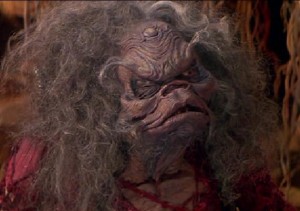 As I’ve already said, for the most part the plot of the novelization happens just like in the film; however, the narrative is a touch different here and there. For example, in the book Aughra wants to taunt the Skeksis when they kidnap her about how Jen’s on his way to end their reign, but knows to bite her tongue and not give the plan away. In the film, Aughra doesn’t care and just flat out tells them they’re in trouble. This brings up the point of how the dialogue is a bit different in the two mediums. While some of the lines from the book happen verbatim in the film, there are certainly lengthier conversations between characters on page. There’s a moment in the novelization when Jen asks Aughra if she’s female, since he has no memory of ever seeing a female. It’s a new moment that adds a nice touch, but it’s also information we were already aware of.
As I’ve already said, for the most part the plot of the novelization happens just like in the film; however, the narrative is a touch different here and there. For example, in the book Aughra wants to taunt the Skeksis when they kidnap her about how Jen’s on his way to end their reign, but knows to bite her tongue and not give the plan away. In the film, Aughra doesn’t care and just flat out tells them they’re in trouble. This brings up the point of how the dialogue is a bit different in the two mediums. While some of the lines from the book happen verbatim in the film, there are certainly lengthier conversations between characters on page. There’s a moment in the novelization when Jen asks Aughra if she’s female, since he has no memory of ever seeing a female. It’s a new moment that adds a nice touch, but it’s also information we were already aware of.
Different languages are used throughout the book. Aughra speaks her own language most of the time, and Kira speaks quite a bit of Podling. In the film, the Skeksis solely speak English, whereas in the book the only time we see them talk in the common tongue is when Chamberlain speaks in broken English to Kira and Jen. This was a nice effect, as it added another creepy layer to the Skeksis by giving them their own language.
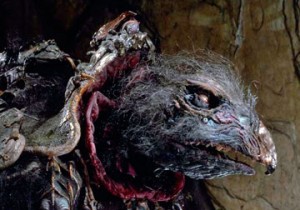 Speaking of those sinister reptilian, birdlike creatures, where the book really does good is when it comes to anything Skeksis-related. We learn the names of all of the Skeksis, what their jobs are, where allegiances lie, etc. We see characters like skekEkl the Ornamentalist, skekAyuk the Gourmand, and, of course, skekSil the Chamberlin (whereas the urRu – known as the Mystics in the film – have names like urZah the Ritual-Guardian and urSul the Chanter).
Speaking of those sinister reptilian, birdlike creatures, where the book really does good is when it comes to anything Skeksis-related. We learn the names of all of the Skeksis, what their jobs are, where allegiances lie, etc. We see characters like skekEkl the Ornamentalist, skekAyuk the Gourmand, and, of course, skekSil the Chamberlin (whereas the urRu – known as the Mystics in the film – have names like urZah the Ritual-Guardian and urSul the Chanter).
The subplot of longing for the Emperor’s throne is much grander in the novelization. Instead of just the Garthim-Master (ie. the General Skeksis) and Chamberlain vying for position of ruler, the Ritual-Guardian is trying to weasel his way onto the throne as well and even begins to strike up a mutiny against the Garthim-Master in the latter half of the book. It’s also neat because, going off of the descriptions of each Skeksis in the novel, it’s considerably easier to figure out who is who when watching the film. For example, the scientist Skeksis, skekTek, has a mechanical arm, a robotic eye, and tubes and wires all over his body. In the book, it’s explained that he ripped out his intestines and body parts to enhance his physical features (I now know who the “Most Interesting Skeksis Backstory Award” goes to). Another thing the book does well is work the history of Skeksis and urRu into the narrative of the story. The movie kind of just chucks a bunch of exposition at us in the first two minutes of the film, whereas the novel weaves it in through the entirety of the book, which flows so much better.
Also, can we take a moment to appreciate how the urRu/Skeksis original form – better known as urSkek – makes them basically translucent Groots? I mean, just look at them. We are Groot, am I right?
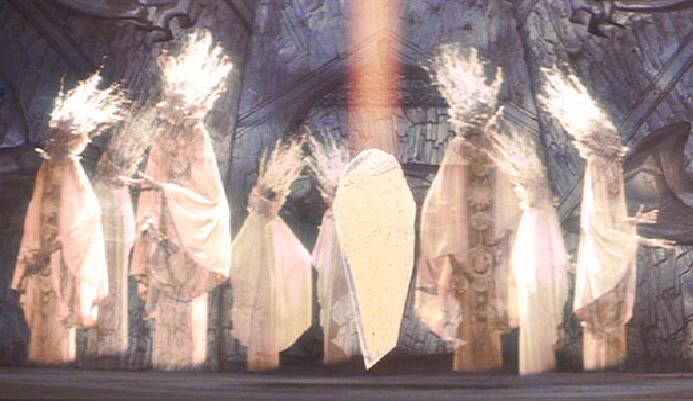 Ahem. Sorry. Back to the novelization.
Ahem. Sorry. Back to the novelization.
So, one of my major problems with the Dark Crystal film is a bit more straight forward: Jen.
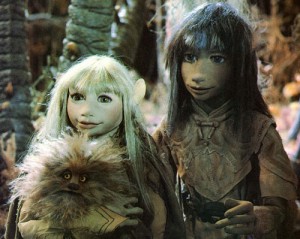 I’ve always found Jen to be a dull, flat character. In the novelization, Jen’s still boring as all get out, but on the plus side his narrative is less ridiculous. The book has the advantage of allowing the narration to cover all the exposition, whereas the film relies on Jen’s yawn-inducing thoughts to tell the audience what’s going on. Several paragraphs about why book-Jen’s baffled by his surroundings compared to movie-Jen’s “This place is weird” is definitely an upgrade. Also, in the movie Jen has already been filled in about the Skeksis killing his family, but in the book… well, it’s really more of a Dumbledore-Harry situation with Jen and his Master, y’know? He’s left in the dark and has to stumble through the rest of the story trying to figure out what the heck he’s doing.
I’ve always found Jen to be a dull, flat character. In the novelization, Jen’s still boring as all get out, but on the plus side his narrative is less ridiculous. The book has the advantage of allowing the narration to cover all the exposition, whereas the film relies on Jen’s yawn-inducing thoughts to tell the audience what’s going on. Several paragraphs about why book-Jen’s baffled by his surroundings compared to movie-Jen’s “This place is weird” is definitely an upgrade. Also, in the movie Jen has already been filled in about the Skeksis killing his family, but in the book… well, it’s really more of a Dumbledore-Harry situation with Jen and his Master, y’know? He’s left in the dark and has to stumble through the rest of the story trying to figure out what the heck he’s doing.
Then we have Kira, ie. the superior Gelfling. Kira manages to be more interesting in the book than she is in the film. We get a lengthy description of her life lived amongst the Podlings, and her compassion and curiosity shines through. Not to mention she refuses to be put down, even telling Jen “I wont be left anywhere” when he tries to go on without her at one point. There’s even that moment from the film where Kira sits on the Gelfling throne, except the book emphasizes how comfortable she feels sitting there.
While Jen and Kira’s relationship in the novelization never delves into romantic tendencies, it’s much more heavily implied in the book that the Gelflings care about each other on that level. The dream fasting between the two is better in the book as well – instead of some brief clips with some dialogue explaining everything, we receive clear descriptions of how the two Gelfling were raised and what exactly their memories contain.
Okay, okay, enough praise. Where did I find fault in the book?
 A complaint that kept popping up for me was, as already mentioned, the overall lack of backstory and history of the world that The Dark Crystal presents. I approached the book expecting to have a broader view of this land and, while we do receive descriptions of what it looks like, it doesn’t necessarily answer any questions. While I think we got a good, more well-laid out look at the life of the Skeksis in the novelization, I definitely wanted more about the urRu. Just like in the film, they’re there in the beginning, and then only pop up a few times in the rest of the book. Sure, the book explains how they lead quiet, humble lives, but we’ve already discerned that from the film. It just feels like the novelization was a chance to expand the world’s could-have-been rich history, and the opportunity was not seized.
A complaint that kept popping up for me was, as already mentioned, the overall lack of backstory and history of the world that The Dark Crystal presents. I approached the book expecting to have a broader view of this land and, while we do receive descriptions of what it looks like, it doesn’t necessarily answer any questions. While I think we got a good, more well-laid out look at the life of the Skeksis in the novelization, I definitely wanted more about the urRu. Just like in the film, they’re there in the beginning, and then only pop up a few times in the rest of the book. Sure, the book explains how they lead quiet, humble lives, but we’ve already discerned that from the film. It just feels like the novelization was a chance to expand the world’s could-have-been rich history, and the opportunity was not seized.
There are a couple other, more minor, complaints as well. For example, I was disappointed in the sheer lack of Fizzgig. To be fair, Fizzgig is a very visual character. He works wonderfully as comic relief, and is great for a cute, silly break whenever the film needs one. Unfortunately, that doesn’t translate well on the page, so he’s sort of there and doesn’t do much. He still has his big moment near the end, sure, but otherwise he’s just referenced every so often and that’s about it. Also, the film is so pretty, which really grabs one’s attention while they’re watching it. For me, personally, the book majorly dragged when there were a lot of descriptions and barely any action. There’s only so many ways you want to read about how the Ritual-Guardian keeps glaring at the Garthim-Master during their meal.
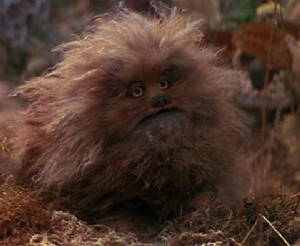 My biggest complaint, however, bigger than the lack of history and backstory (and Fizzgig), was the climax of the book. I was so looking forward to a lengthy ending, telling us what became of not only Jen and Kira, but the entire world that they just saved. I figured we’d be told what happened with the urSkek (the urRU and Skeksis reunited form), if Jen and Kira ever decided to *ahem* repopulate the Gelfing race, and the aftermath of the Dark Crystal’s effects on their land.
My biggest complaint, however, bigger than the lack of history and backstory (and Fizzgig), was the climax of the book. I was so looking forward to a lengthy ending, telling us what became of not only Jen and Kira, but the entire world that they just saved. I figured we’d be told what happened with the urSkek (the urRU and Skeksis reunited form), if Jen and Kira ever decided to *ahem* repopulate the Gelfing race, and the aftermath of the Dark Crystal’s effects on their land.
So, hey, major spoiler alert:
We don’t get any of that.
I guess as a novelization, the book’s true job is to say what happens directly in the film and not go passed the screenplay. Still, I had hoped that maybe A.C.H. Smith was given some elbow room to elaborate on the ending and give us perspective on the finished tale. Instead, we get a climax that is wrapped up in 2.5 pages, which basically ends with Kira and Jen watching the urSkek disappear, just like in the film. The biggest letdown of the entire book, hands down.
In short, I’m not gonna make promises about this novel. If you’re looking for a visually stunning, shorter telling of this tale, stick with the film. If you wouldn’t mind a bit of expansion in character and world descriptions, check the book out. While not necessarily a great piece of literature, The Dark Crystal novelization is still highly entertaining and definitely worth the read for any Henson fan.
Click here to discuss some Henson-related lit with the ToughPigs forum!
by Julia Gaskill

